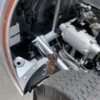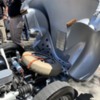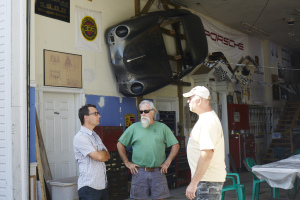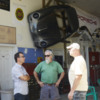I dug out the wiring diagram for a 1960-ish VW sedan because that vintage car had a single, two-filament rear light that gave you tail light, stop light and directional in a single bulb, AND should have that smaller diameter column, too. The diagram might help you, Ed, in unnahstaning how it works.
The VW directional lever on the steering column is all you need and takes the place of any relays. The 1959-1960-ish lever switch has all four lights fed into it, along with a 12V signal wire from the brake switch AND a pulsed 12V wire from the flasher - six wires in all.
If the lever is neutral, it feeds the 12V signal from the stop light switch directly to both rear brake filaments and they light up with braking.
If the lever is moved left, it gets it's 12V pulsed power from the flasher (which is just a thermally operated switch that pulses on and off when power is applied), disconnects both the right side lights and connects both lefts.
Move it to the right and the opposite happens.
So, if the lever is moved to the right and you step on the brake, and it applies the brake 12V to the left side rear while it continues to blink both right sides (front/rear).
All of the switching is done inside of the directional lever switch.
The attached circuit diagram uses a 3-prong flasher: Constant 12V from the fuse, pulsed 12V to the lever switch and a pulsed 12V to the dash lamp which it assumes is seeing 12V on the other side (sounds strange, but it works). Others may work differently - this is how VW did it in 1960.
If a 2-wire flasher is used they usually connect the dash lamp to the lever wire of the flasher and the dash lamp pulses whenever the flasher is activated.
There are other versions of how this works, but this one should do it for Ed, without a trailer converter and should be Über reliable. The converters do the job, but cost $20+ and the el cheapos don't last.



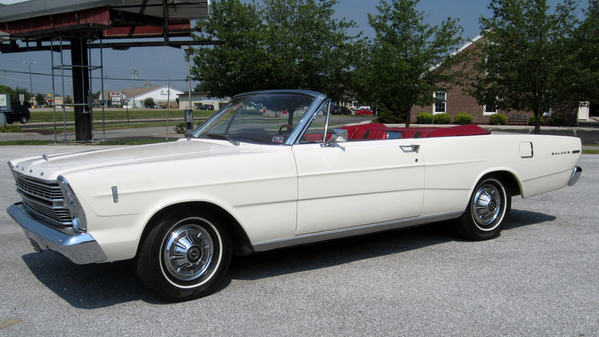
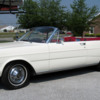
 Caboose"
Caboose"


